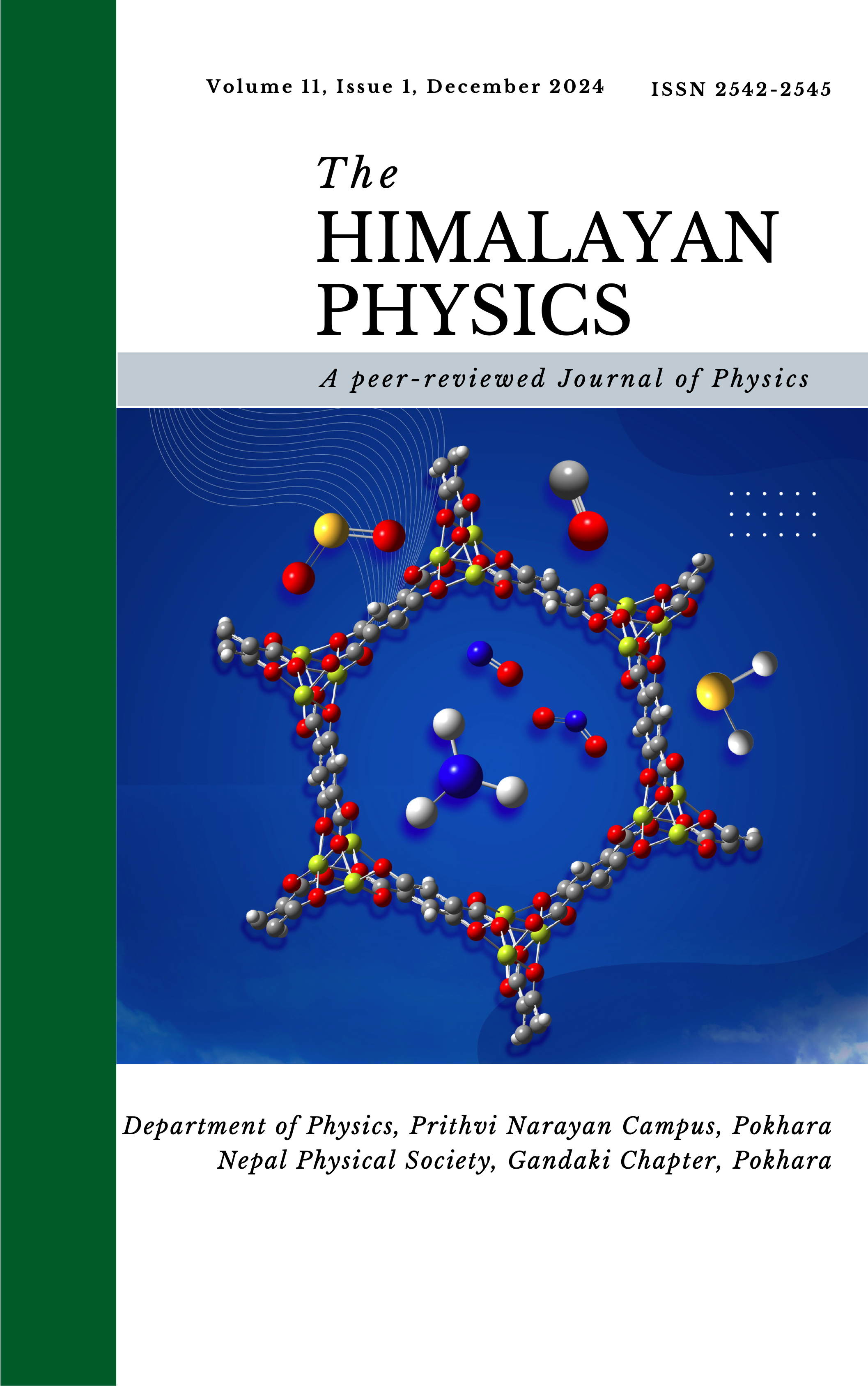Assessment of natural background radiation levels in Ranipokhari, Kathmandu, Nepal, following the 2015 earthquake and during reconstruction
DOI:
https://doi.org/10.3126/hp.v11i1.61269Abstract
Natural background radiation is present in the environment and its level can vary depending on the location, occurring radioactive elements in soil, water, and air. The measurement of natural background radiation in Ranipokhari, a historic pond in Kathmandu, is important as it is currently undergoing reconstruction after the 2015 earthquake. We used a Professional Digital Geiger Counter (GCA 07W) to measure the radiation dose at 50 different locations, 31 of which were on the outer corner of the pond and 19 were inside the pond. The minimum and maximum radiation exposure levels were found to be 49.80 μR/h and 147.48 μR/h, respectively, with an overall average exposure rate of (108.06 ± 3.47) μR/h. We observed that the count and exposure rates were higher on sunny days compared to rainy days. Hypothesis testing suggested that the average background exposure rate in Ranipokhari is higher than the world average external background radiation levels reported by the United Nations Scientific Committee on the Effects of Atomic Radiation (UNSCEAR). Our study provides crucial information on the natural background radiation levels in Ranipokhari, which can assist in the safe reconstruction of this historic pond after the earthquake.
Downloads
Downloads
Published
How to Cite
Issue
Section
License
Copyright (c) 2024 Himalayan Physics

This work is licensed under a Creative Commons Attribution-NonCommercial 4.0 International License.

The articles published in the Himalayan Physics are distributed under a license CC BY-NC-SA 4.0.




